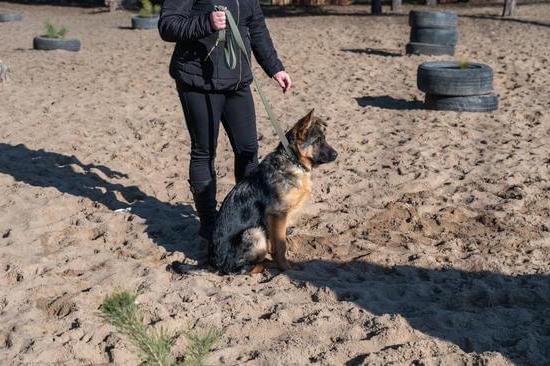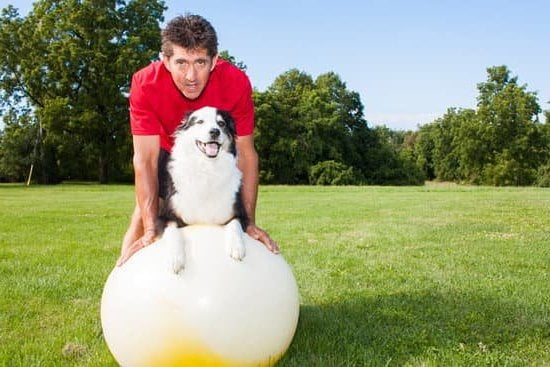Training your dog is an essential part of responsible pet ownership. It not only enhances the bond between you and your furry companion but also has a positive impact on their behavior and overall well-being. In the following sections, we will guide you through the process of training your dog, starting with setting the foundations and understanding basic dog psychology.
We will then delve into teaching essential commands, housetraining, addressing common behavior issues, and advanced training techniques. Additionally, we will provide troubleshooting tips and emphasize the importance of positive reinforcement throughout the training journey. So let’s embark on this exciting journey of training your dog 101.
Setting the Foundations
Tips for Creating a Suitable Training Environment
Before starting your dog’s training journey, it’s important to create a suitable environment within your home that promotes successful learning and growth. Here are some tips to help you set the foundations for effective dog training:
- Clear any distractions: Choose a quiet area in your home where you can minimize distractions during training sessions. This will help your dog stay focused and engaged.
- Use positive reinforcement: Have treats or toys readily available to reward your dog for desired behavior. This will motivate them to continue learning and make the training experience enjoyable for both of you.
- Remove hazards: Ensure that the training area is free from any potential hazards such as toxic plants, loose cords, or small objects that your dog could swallow.
- Provide comfort: Make sure the area is comfortable and inviting for your dog. Use soft bedding or mats to create a cozy space where they feel safe and relaxed.
The Importance of Routine and Consistency
Establishing routine and consistency are key elements in successful dog training. Dogs thrive on predictability, so creating a structured environment will make it easier for them to understand what is expected of them. Here’s why routine and consistency are important:
- Clear expectations: When you establish a consistent routine, your dog learns what behaviors are acceptable and what is off-limits. Consistency allows them to understand what actions lead to rewards or consequences.
- Building trust: Routine provides stability, which helps build trust between you and your dog. When they know what to expect from their environment, it reduces anxiety and creates a sense of security.
- Reinforcing good habits: Consistently rewarding desired behaviors reinforces those actions, making them more likely to be repeated in the future.
- Effective communication: By consistently using the same commands, hand signals, and cues during training sessions, you’re establishing clear communication channels with your dog. This helps them understand and respond to your instructions more effectively.
By creating a suitable training environment and establishing routine and consistency, you are laying the foundations for successful dog training. These elements provide the structure and predictability that dogs need to thrive and excel in their learning journey. Remember, patience and positive reinforcement play vital roles in the training process, so be sure to maintain a calm and encouraging atmosphere throughout your sessions.
Understanding Basic Dog Psychology
When it comes to training your dog, it is crucial to have a good understanding of their psychology and natural instincts. This knowledge can greatly influence how you communicate and interact with your furry friend during the training process. By comprehending your dog’s behavior patterns and instincts, you can tailor your training methods accordingly and foster a stronger bond with your canine companion.
Dogs are pack animals by nature, which means they have an inherent desire to establish a social hierarchy. Understanding this instinct can help you establish yourself as the alpha or leader in your dog’s eyes, which is crucial for effective training. Maintaining consistent rules and boundaries will not only benefit the training process but also provide a sense of stability for your dog.
Communication plays a vital role in any relationship, including the one between you and your dog. However, dogs do not understand human language. Instead, they rely on body language and vocal cues to interpret our intentions. Learning to effectively communicate with your dog through body language and tone of voice is essential for successful training.
To effectively communicate with your furry friend:
- Use clear signals: Dogs respond well to clear hand signals or gestures paired with verbal commands.
- Be consistent: Consistency is key when it comes to delivering commands or conveying expectations.
- Be patient and positive: Maintain a calm demeanor while using positive reinforcement techniques – rewards such as treats or praise – to encourage desired behaviors.
- Learn to read your dog’s body language: Being able to interpret subtle changes in body posture, facial expressions, and tail movements will help you better understand what your dog is trying to communicate.
By understanding the basic psychology of dogs and utilizing effective communication techniques, you can create a positive learning environment for both you and your canine companion. This understanding allows you to tailor your approach based on their unique needs and personalities while building trust and strengthening the bond between you both throughout the training process.
Essential Commands Every Dog Should Know
Step-by-Step Guide to Teaching Basic Commands
Teaching your dog essential commands is the foundation of their training. These commands not only help to keep them safe but also improve their behavior and overall obedience. In this section, we will provide you with a step-by-step guide on how to teach some of the most important basic commands such as sit, stay, come, and down.
To start, it’s important to choose a quiet and distraction-free area for training. This will help your dog focus better and minimize any potential interruptions. Begin with the command “sit.” Hold a treat close to their nose and move your hand upward while saying the word “sit.” As they follow the treat with their eyes and naturally lower their rear end, praise them immediately with positive reinforcement and give them the treat.
Once your dog has grasped the concept of sitting, you can move on to teaching them the command “stay.” Start by having your dog sit in front of you. Open up your palm in a stop gesture while firmly saying “stay” and take a step backward.
If they remain sitting without moving towards you, praise them enthusiastically and reward them with a treat. Gradually increase the distance between you and your dog as they become more proficient at staying in place.
Using Positive Reinforcement Techniques
Positive reinforcement is an extremely effective method for encouraging desired behavior in dogs during training. It involves rewarding your dog when they perform the desired action or follow a command correctly. This type of training technique helps build trust between you and your dog while keeping them motivated.
When using positive reinforcement to train your dog, remember to reward them immediately after they perform the desired behavior. Use treats, toys, or verbal praise as rewards depending on what motivates your particular canine companion. It’s crucial to be consistent with rewards so that your dog understands which actions are being reinforced positively.
Avoid using punishment or harsh training methods as they can create fear and anxiety in your dog, negatively impacting their training progress. Positive reinforcement not only enhances the learning experience for your dog but also strengthens the bond between you and your furry friend.
Troubleshooting Common Challenges
During the training process, it’s common to encounter challenges and setbacks. One of the most important aspects to remember is patience. Dogs learn at their own pace, so it’s crucial to be patient and remain calm during training sessions.
If your dog is having difficulty grasping a particular command or behavior, break down the task into smaller steps. For example, if they struggle with “stay,” start with just a few seconds of waiting before giving them a reward. Gradually increase the duration over time.
Consistency is also key when addressing challenges during training. Make sure everyone in your household uses the same commands and techniques to avoid confusion for your furry friend. Additionally, ensure that you are providing clear and consistent signals through body language and verbal cues.
Remember that each dog is unique, so what works for one may not work for another. Be flexible in adapting your training approach to suit your dog’s individual needs and personality. With perseverance, patience, and positive reinforcement, you will overcome any challenges that come your way during the training process.
Housetraining Made Easy
Housetraining, or potty training, is an essential part of owning a dog and creating a harmonious home environment. It not only prevents accidents and messes in the house but also establishes good habits and routines for your furry friend. In this section, we will highlight the importance of housetraining and provide a comprehensive guide on effective methods to achieve success.
One of the key reasons why housetraining is crucial is that it helps in maintaining cleanliness and hygiene within your home. By teaching your dog where it is appropriate to relieve himself, you can avoid unpleasant surprises on your carpets or furniture. Additionally, housetraining promotes a harmonious living environment for both you and your dog. When accidents are minimized, stress levels decrease, creating a more relaxed atmosphere for everyone.
To begin the process of housetraining your dog, it’s important to establish a consistent routine. Dogs thrive on predictability, so setting specific times for feeding, bathroom breaks, and walks will help them understand when they should go outside to eliminate waste. Consistency is key as it reinforces the association between going outdoors and relieving themselves.
There are several effective housetraining methods available, but one commonly recommended approach is crate training. This method relies on utilizing a crate or confinement area to limit your dog’s access to the house when unsupervised until they develop better control over their bladder and bowels. The crate should be large enough for your dog to stand up, turn around, and lie down comfortably.
It’s important to note that accidents are inevitable during the housetraining process. It’s crucial not to punish or scold your dog for accidents as this can create fear or anxiety around elimination. Instead, focus on positive reinforcement by praising and rewarding your dog whenever they eliminate in the designated area outside.
Overall, housetraining your dog requires patience, consistency, and positive reinforcement. By following a comprehensive guide and applying effective methods such as crate training and establishing a routine, you can ensure that your dog becomes fully housetrained and enjoys a clean and comfortable living environment.
| Method | Description |
|---|---|
| Crate Training | A method that utilizes a crate or confinement area to limit a dog’s access to the house when unsupervised until they develop better control over their bladder and bowels. |
| Routine Establishment | Setting specific times for feeding, bathroom breaks, and walks to reinforce the association between going outdoors and relieving themselves. |
| Positive Reinforcement | Praising and rewarding the dog whenever they eliminate in the designated area outside to reinforce desired behavior. |
Addressing Common Behavior Issues
One of the most common challenges dog owners face is dealing with unwanted behaviors such as excessive barking, leash pulling, and jumping. Fortunately, with patience and proper training techniques, these issues can be effectively addressed while maintaining a positive training experience for both you and your furry friend.
Excessive barking is a behavior that can become quite bothersome if not properly managed. To address this issue, it’s important to first understand why your dog may be barking excessively. Dogs may bark out of boredom, fear, anxiety, or even as a form of communication. By identifying the root cause of the barking, you can then begin to work on finding appropriate solutions.
Here are some tips to help manage excessive barking:
- Provide mental and physical stimulation: Dogs who are mentally and physically fulfilled are less likely to engage in excessive barking. Consider incorporating puzzle toys, interactive games, and regular exercise into your dog’s routine.
- Teach the “quiet” command: Training your dog to understand the “quiet” command can be helpful in curbing excessive barking. Whenever your dog starts barking excessively, calmly say “quiet” and wait for them to stop. Once they do, reward them with praise or a treat.
Leash pulling is another common behavior issue that many dog owners encounter during walks. While it may seem challenging at first, with consistent training and positive reinforcement techniques, you can teach your dog to walk politely on a leash.
Here are some tips for addressing leash pulling:
- Use positive reinforcement: Reward your dog whenever they walk nicely on a loose leash by offering treats or verbal praise. This will help reinforce the desired behavior.
- Utilize distraction techniques: If your dog tends to pull towards something they find exciting or interesting, redirect their attention using verbal cues or treats. For example, if they start pulling towards another dog approaching, ask them to sit and reward them for responding.
- Consider using a front-clip harness or head halter: These tools can provide additional control during walks and discourage pulling. However, it’s essential to introduce these tools gradually and ensure they are properly fitted.
By consistently applying these techniques and addressing common behavior issues in a positive and patient manner, you’ll be able to overcome these challenges with your canine companion while strengthening the bond between you and your furry friend. Remember that training is an ongoing process, so don’t get discouraged if progress takes time. With dedication and perseverance, you can help your dog become a well-behaved member of your family.
Advanced Training Techniques
Once your dog has mastered the basic commands and behaviors, it’s time to take their training to the next level. Advanced training techniques can provide mental stimulation for your dog and further enhance their skills. This section will introduce more complex commands and tricks that can challenge your dog’s cognitive abilities.
One way to advance your dog’s training is by teaching them new commands beyond the basic ones they already know. For example, you can introduce commands like “leave it,” “drop it,” or “wait.” These commands are particularly useful in situations where your dog may encounter potential hazards or distractions. Teaching these advanced commands requires patience and consistency, but with time and practice, your dog will be able to understand and respond effectively.
Trick training is another fun way to challenge your dog’s skills. Tricks such as rolling over, playing dead, or fetching specific objects can impress your friends and family while keeping your dog mentally engaged. Break down each trick into smaller steps and use positive reinforcement techniques to reward small achievements along the way. Remember to always keep training sessions short and enjoyable so that your dog remains motivated and eager to learn.
Progressive training methods can also help take your dog’s skills to the next level. This approach involves gradually increasing the difficulty of exercises while still building upon the foundation of basic commands. For example, you can use longer durations for a “stay” command or add distractions during a “sit” command. By slowly challenging your dog with new scenarios and environments, they will become more adaptable and better at following instructions.
Taking your dog’s training to an advanced level not only provides mental stimulation but also strengthens the bond between you and your pet. It demonstrates your dedication as an owner and helps build trust, respect, and clear communication with your furry companion. Remember that each dog learns at their own pace, so be patient, consistent, and always celebrate small victories throughout the training process.
Troubleshooting
Training a dog can be a rewarding and fulfilling experience, but it is not without its challenges. In this section, we will address some common setbacks and challenges that owners may face during the training process and offer guidance on how to overcome them.
One common challenge that many owners encounter is inconsistency. Consistency is key when it comes to training your dog. Dogs thrive on routine and repetition, so it is important to establish consistent rules and expectations.
If you are inconsistent with your training methods or vary the rules from day to day, your dog may become confused and his progress may suffer. To overcome this challenge, make sure everyone in your household is on the same page and using consistent commands and techniques. Regularly review the training plan with all family members involved in caring for the dog to ensure everyone understands their role in the training process.
Another challenge that owners may face is dealing with distractions. Dogs have a natural curiosity about the world around them, which can make it challenging to keep their focus during training sessions, especially in new or stimulating environments.
To overcome this challenge, start by training in a quiet, familiar space and gradually increase the level of distractions as your dog becomes more proficient in his commands. You can also use treats or toys as rewards during training sessions to help maintain your dog’s attention.
Additionally, some dogs may exhibit stubbornness or resistance during training, which can be frustrating for owners. It’s important to remember that every dog is unique and learns at their own pace. If you encounter resistance or stubborn behavior from your dog, try breaking down the command into smaller steps or finding alternative ways to motivate him, such as using higher-value treats or incorporating playtime into the training session.
Emphasizing Positive Reinforcement
Positive reinforcement training is a highly effective and humane method for training dogs. Instead of using punishment to discourage unwanted behavior, positive reinforcement focuses on rewarding and encouraging desired behaviors. This section will delve deeper into the benefits of positive reinforcement and provide examples of how to implement reward-based training methods with your dog.
One of the key advantages of positive reinforcement is that it strengthens the bond between you and your dog. By using rewards such as treats, praise, or playtime, you are creating a positive association with certain behaviors. This not only motivates your dog to repeat those behaviors but also fosters a sense of trust and cooperation between you and your furry companion.
To effectively use reward-based training methods, it’s important to determine what motivates your dog. Every dog is unique, so while some may be food-motivated, others may respond better to verbal praise or a favorite toy. Experiment with different rewards to find what gets your pup excited and willing to learn.
Timing is crucial when using positive reinforcement. The reward should be given immediately after the desired behavior occurs so that the connection between the action and the reward is clear in your dog’s mind. Consistency is also key; always reward the correct behavior consistently to reinforce its importance.
It’s important to note that positive reinforcement does not mean ignoring unwanted behavior. Instead, redirect your dog’s attention towards more acceptable alternative behaviors and promptly reward them for it. For example, if your dog jumps on people when greeting them, teach them an alternative command like “sit” or “down” instead, then reward them when they perform that command instead of jumping.
Conclusion
In conclusion, training your dog is an essential endeavor that not only benefits the behavior and well-being of your furry companion but also strengthens the bond between owner and pet. Throughout this guide, we have explored the various aspects of dog training, from setting the foundations to addressing common behavioral issues and even delving into advanced training techniques.
By understanding the importance of training your dog, you are taking a proactive step towards creating a harmonious home environment. Training provides mental stimulation for your dog, which is crucial for their overall well-being. It also helps in preventing unwanted behaviors and fosters better communication between you and your canine companion.
Remember that training is an ongoing process, not a one-time activity. Even after mastering basic commands or tackling certain behavioral issues, it’s important to continue training to maintain and build upon those skills. By consistently reinforcing desired behaviors through positive reinforcement methods, your dog will continue to learn and grow throughout their life.
So, as you celebrate your dog’s training journey so far, remember that this is just the beginning. Keep up with the training routines and techniques you have learned, while always being open to learning new ones. With patience, consistency, and love, your dog will become a well-behaved member of your family who brings joy and happiness into your lives every day.
Thank you for joining us on this journey of how to train your dog effectively. With these strategies in mind, may you enjoy a strong and harmonious relationship with your furry friend for years to come.
Frequently Asked Questions
What are the 5 golden rules of dog training?
The 5 golden rules of dog training are a set of principles that can help guide the training process and establish a positive relationship between the dog and its owner. Firstly, consistency is key. It’s important to use consistent commands, rewards, and consequences to ensure clear communication with the dog. Secondly, patience is crucial. Dogs learn at different paces, so it’s essential to remain patient and understanding throughout the training process. Thirdly, timing is everything.
Providing immediate feedback and rewards helps reinforce desired behaviors effectively. Fourthly, positive reinforcement is more effective than punishment. Rewarding good behavior with treats or praise encourages dogs to repeat those actions in the future while punishing them may create fear or anxiety. Lastly, setting realistic expectations is important for both the dog and the owner. Recognizing that training takes time and effort allows for gradual progress and avoids unnecessary frustration.
How do you train a dog for beginners?
When training a dog as a beginner, it’s advisable to start with basic obedience commands such as sit, stay, come, and down. Using positive reinforcement techniques like treats or praise can motivate dogs to learn these commands more quickly. Consistency in using specific verbal cues for each command helps the dog associate those words with specific actions.
Additionally, incorporating short training sessions into daily routines allows for regular practice without overwhelming the dog or losing their interest. Patience is vital during this process because beginners may need time to understand how their actions impact their dogs’ learning abilities. Seeking guidance from professional trainers or attending obedience classes can also provide beginners with helpful tips on effective training methods.
What is the number one rule in dog training?
The number one rule in dog training is to always be consistent in your approach. Consistency means using the same command words or gestures for desired behaviors every time you train your dog or expect them to perform an action correctly. Dogs thrive on routine and repetition; inconsistency can confuse them and hinder their learning progress.
Consistency also extends to enforcing rules consistently across all family members or individuals involved in the dog’s training. If one person allows something that another person prohibits, the dog may become confused and find it difficult to understand what is expected from them. By being consistent, the dog can better understand what is required of them and respond accordingly.

Welcome to the blog! I am a professional dog trainer and have been working with dogs for many years. In this blog, I will be discussing various topics related to dog training, including tips, tricks, and advice. I hope you find this information helpful and informative. Thanks for reading!





